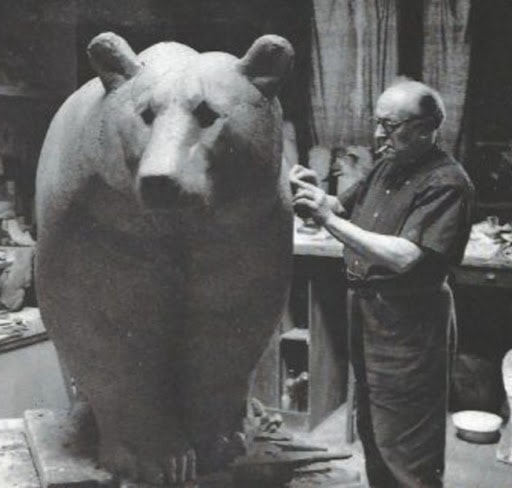
Georges GUYOT
With his school leaving certificate in his pocket, Guyot was placed as an apprentice with a wood sculptor on the Faubourg Saint Antoine. He was soon drawn to the world of animals, frequenting the Jardin des Plantes, where he drew, and learning about art at the Louvre Museum, where he was fascinated by Barye's Lion with a Snake. At the age of 18, he enlisted in the 39th Infantry Regiment, based in Rouen, and attended evening classes at the École des Beaux-Arts, where he learns painting. One day, his teacher, M. Lelong, asked him to make a clay animal. He produced a bear and, given the quality of his work, His teacher suggested to send his piece to the Salon des Artistes Français, where he was immediately accepted.
Guyot married in 1908 and decided to live from his art from 1910. Mobilised in 1914, he was discharged in 1917 due to illness, but had to give up sculpture until the 1920s because of a lack of opportunities. Later, he joined the Groupe des Douze (Group of Twelve) around Pompon and began a great career as a painter and sculptor, which earned him numerous commissions from the State and local authorities, including the Brown Bear at Vincennes Zoo, the Horses for the Trocadero fountain and the Wild Boar at Conches.
Named Chevalier and then Officier de la Légion d'Honneur, he was the first sculptor to receive the E.M. Sandoz prize in 1972. The end of his life was marked by the fire at the Bateau Lavoir on 12 May 1970, where he had worked since 1918, and the destruction of some of his models. He died in 1973.



